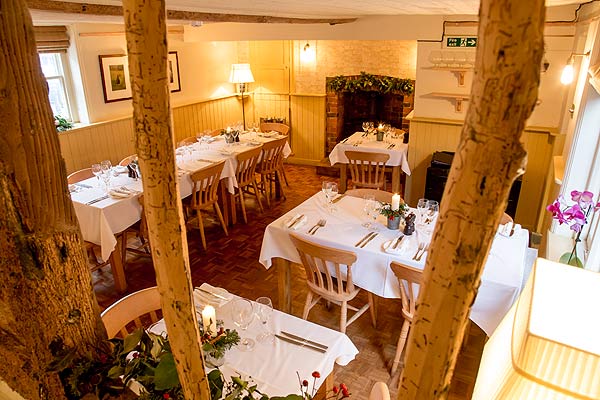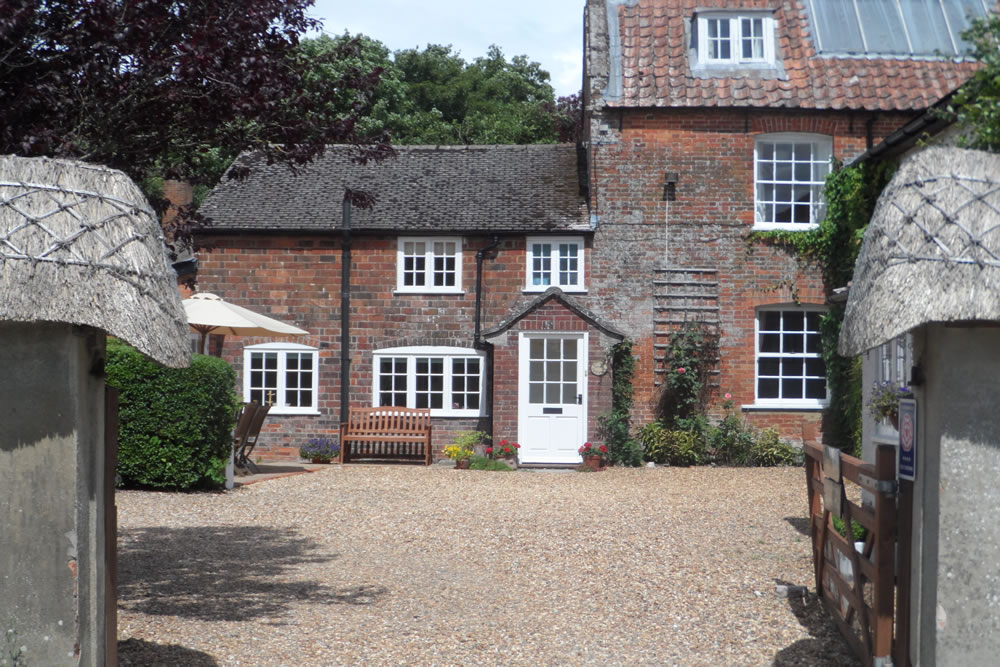The Marlborough is a traditional inn located on the High Street and dates from the 15th century…
Around Wootton Rivers

3 miles (4.8kms)
About the walk
For the visitor to Wootton Rivers, there is a timeless feel about this sleepy, picturesque village. However, for its residents the church clock is a constant reminder of man’s greatest enemy – time. Church clocks are a common sight and sound throughout the country but the one at Wootton Rivers has a rather unusual history. Slightly hidden from view, the parish church of St Andrew is to be found down a long path off the main street. Peer a little closer and you will see there is something distinctly different about its clock - it has three faces. Two are conventional but the third displays the words ‘Glory be to God’ around the edge of the dial instead of numerals. Conveniently, the number of characters adds up to 12.
Time for a celebration
The design of the clock dates back over one hundred years, to 1911, and is the work of the amusingly-named Jack Spratt, an eccentric countryman who established himself locally as an amateur clockmaker. To commemorate the coronation of George V, the people of Wootton Rivers decided to provide the church with a clock, though the idea was greeted with indifference, the sense of apathy in the village compounded by a distinct lack of funds. Jack Spratt came to the rescue and offered to make the clock for nothing, providing villagers donated several hundredweight of scrap iron, steel, brass and lead. The offer was greeted with a barely concealed note of incredulity, though Spratt duly received a variety of brass weights, lead pipes, gun metal and other materials. A London firm was consulted over the question of making wheels and pinions but nothing further was heard when it was sent a description of the clock.
A blacksmith and a broomstick
With the help of a local blacksmith, Spratt set about constructing his clock. He used a broomstick for the pendulum and came up with an unusual and distinctive set of chimes. The hours between 12 and six have different sets of quarter chimes, which are repeated between six and 12. Spratt lived locally and owned countless clocks, including a grandfather clock capable of playing more than one hundred tunes. He also made a clock and placed it on the front of his house – only the numerals ‘3’ and ‘9’ were displayed on the dial. The words ‘Clock House’ – the name of his thatched cottage – were arranged above and below the numerals. Spratt died in 1935
Walk directions
From the car park in the centre of Wootton Rivers turn left and walk through the village, passing an assortment of thatched cottages and period houses. Walk beside the Royal Oak and continue between buildings, passing Southbank on the left and Clare Cottage on the right. As the road bears right, on the outskirts of Wootton Rivers, go straight ahead on a track between a thatched cottage and a house called Martinsell.
This is the route of the Mid Wilts Way. The track cuts between fields, fences and hedges and then lines of trees. Pass a track running off to the left and follow the track as it climbs quite steeply to a junction. Turn right, skirt the field edge and away to the right are striking views of Wiltshire downland. Wootton Rivers is seen sheltering in the foreground. Turn left in the field corner and after 50yds (46m) pass through a gap in the right boundary.
Turn immediately left and ascend to a major intersection. Turn right, following a broad woodland path (Mud Lane). There are memorable views between the trees. On reaching the road by the remnants of two disused railways on the left of the path, turn right. Walk down the road and when it bends right, keep left at a footpath sign and a sign ‘Brimslade-private drive’. Pass a footpath on the left and head down the drive towards the Kennet & Avon Canal. Avoid a path on the right and when the drive bears right by a wooden sign, continue ahead beside Cadley Lock Cottage.
Cross the canal at the bridge and turn immediately right to join the footpath, heading west. Pass Brimslade Lock and the buildings of Brimslade Farm are now visible over on the opposite bank. Continue to Heathy Close Lock and bridge number 107. Pewsey Pumping Station is seen beside the towpath. Pass Wootton Rivers Lock and leave the towpath at the road bridge. Turn right, following the Mid Wilts Way, pass the entrance to Manor Farm House on the left and walk along the village street to the car park where the walk began, passing a disused George VI post box in the left wall followed by St Andrew’s Church with its long path leading to the entrance.
Additional information
Tracks, paths, road and towpath
Farmland, woodland and canal
Apart from road and field edges, off lead
OS Explorer 157 Marlborough & Savernake Forest
Car park in the centre of Wootton Rivers, between the pub and church
None on route
WALKING IN SAFETY
Read our tips to look after yourself and the environment when following this walk.
Find out more
Also in the area
About the area
Discover Wiltshire
A land shrouded in mystery, myth and legend, Wiltshire evokes images of ancient stone circles, white chalk horses carved into hillsides, crop circles and the forbidden, empty landscape of Salisbury Plain. To many M4 and A303 drivers heading out of London through the clutter of the Thames Valley, Wiltshire is where the landscape opens out and rural England begins.
Wiltshire’s charm lies in the beauty of its countryside. The expansive chalk landscapes of the Marlborough and Pewsey downs and Cranborne Chase inspire a sense of space and freedom, offering miles of uninterrupted views deep into Dorset, Somerset and the Cotswolds. Wiltshire’s thriving market towns and picturesque villages provide worthwhile visits and welcome diversions. Stroll through quaint timbered and thatched villages in the southern Woodford and Avon valleys and explore the historic streets of the stone villages of Lacock, Castle Combe and Sherston. Walk around Salisbury and discover architectural styles from the 13th century to the present and take time to visit the city’s elegant cathedral and fascinating museums. And if all of that isn’t enough, the county is also richly endowed with manor houses, mansions and beautiful gardens.
Nearby stays
Restaurants and Pubs
Nearby experiences
Recommended things to do
Why choose Rated Trips?
Your trusted guide to rated places across the UK
The best coverage
Discover more than 15,000 professionally rated places to stay, eat and visit from across the UK and Ireland.
Quality assured
Choose a place to stay safe in the knowledge that it has been expertly assessed by trained assessors.
Plan your next trip
Search by location or the type of place you're visiting to find your next ideal holiday experience.
Travel inspiration
Read our articles, city guides and recommended things to do for inspiration. We're here to help you explore the UK.













